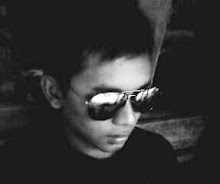Mengenai Saya
Arsip Blog
Diberdayakan oleh Blogger.
Recent Posts
Download
Blogger Tricks
Blogger Themes
Featured Video
Sabtu, 24 Juli 2010
21.36
north korea
North Korea has conducted two nuclear weapon tests. On 9 October 2006, North Korea tested its first nuclear device at 10:35AM (local time) at Mount Mant'ap near P'unggye-ri, Kilchu-kun, North Hamgyong Province. The yield from this test appeared to be less than 1 kiloton; North Korea was reportedly expecting at least a 4 kiloton yield, possibly indicating that the North Korean nuclear program still had a number of technical hurdles to overcome before it had a usable warhead. In reaction to the test, the UN Security Council passed Resolution 1718 placing sanctions on North Korea.
On 25 May 2009, North Korea conducted its second nuclear test. North Korea's Korean Central News Agency (KCNA) announced that Pyongyang had carried out the nuclear test, and that it "was safely conducted on a new higher level in terms of its explosive power and technology of its control." Initial estimates from the U.S. government showed the test causing seismic activity equivalent to a magnitude of 4.7 on the Richter Scale and located close to the site of the first nuclear test in 2006. Early estimates pointed to a possible yield for the test of between 4 and 8 kilotons; while this is stronger than the first test, some analysts still questions the viability of Pyongyang's nuclear warhead design.
Pyongyang's nuclear infrastructure started taking shape in the 1950s with North Korea conducting research on radioactive isotopes for use in industry, agriculture, and medicine at the newly established Academy of Sciences. In 1961, the DPRK began construction of the Yongbyon-kun nuclear energy research complex, which was completed in 1964. The Soviet Union provided a small research reactor at the site in 1965, and Pyongyang subsequently expanded the complex and built a number of new facilities, including a large plutonium reprocessing plant (Radiochemistry Laboratory). North Korea signed the Treaty on the Non-Proliferation of Nuclear Weapons (NPT) in 1985 but did not submit to International Atomic Energy Agency (IAEA) inspections until May 1992.
A crisis unfolded in 1993 in which North Korea refused to give IAEA inspectors access suspect waste sites. The Agency asked the United Nations Security Council (UNSC) to authorize special ad hoc inspections. In response, North Korea announced its intention to withdraw from the NPT on 12 March 1993. Following intense bilateral negotiations with the United States, Pyongyang agreed to "suspend" its withdrawal. North Korea agreed to allow the "continuity of safeguards" on its present activities, but refused to allow inspections that could verify past nuclear activities.
North Korea has conducted two nuclear weapon tests. On 9 October 2006, North Korea tested its first nuclear device at 10:35AM (local time) at Mount Mant'ap near P'unggye-ri, Kilchu-kun, North Hamgyong Province. The yield from this test appeared to be less than 1 kiloton; North Korea was reportedly expecting at least a 4 kiloton yield, possibly indicating that the North Korean nuclear program still had a number of technical hurdles to overcome before it had a usable warhead. In reaction to the test, the UN Security Council passed Resolution 1718 placing sanctions on North Korea.
On 25 May 2009, North Korea conducted its second nuclear test. North Korea's Korean Central News Agency (KCNA) announced that Pyongyang had carried out the nuclear test, and that it "was safely conducted on a new higher level in terms of its explosive power and technology of its control." Initial estimates from the U.S. government showed the test causing seismic activity equivalent to a magnitude of 4.7 on the Richter Scale and located close to the site of the first nuclear test in 2006. Early estimates pointed to a possible yield for the test of between 4 and 8 kilotons; while this is stronger than the first test, some analysts still questions the viability of Pyongyang's nuclear warhead design.
Pyongyang's nuclear infrastructure started taking shape in the 1950s with North Korea conducting research on radioactive isotopes for use in industry, agriculture, and medicine at the newly established Academy of Sciences. In 1961, the DPRK began construction of the Yongbyon-kun nuclear energy research complex, which was completed in 1964. The Soviet Union provided a small research reactor at the site in 1965, and Pyongyang subsequently expanded the complex and built a number of new facilities, including a large plutonium reprocessing plant (Radiochemistry Laboratory). North Korea signed the Treaty on the Non-Proliferation of Nuclear Weapons (NPT) in 1985 but did not submit to International Atomic Energy Agency (IAEA) inspections until May 1992.
A crisis unfolded in 1993 in which North Korea refused to give IAEA inspectors access suspect waste sites. The Agency asked the United Nations Security Council (UNSC) to authorize special ad hoc inspections. In response, North Korea announced its intention to withdraw from the NPT on 12 March 1993. Following intense bilateral negotiations with the United States, Pyongyang agreed to "suspend" its withdrawal. North Korea agreed to allow the "continuity of safeguards" on its present activities, but refused to allow inspections that could verify past nuclear activities.
Langganan:
Postingan (Atom)
